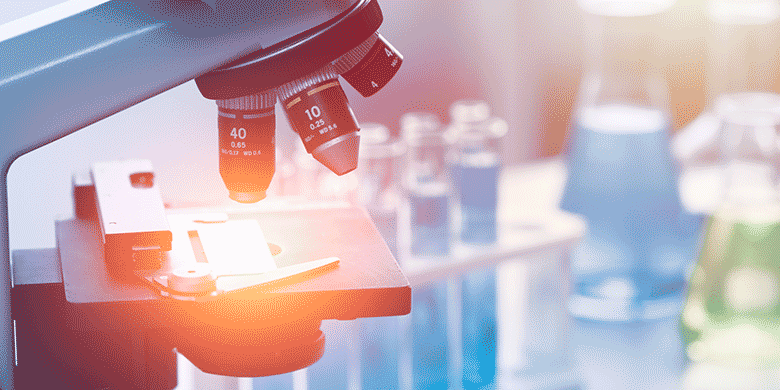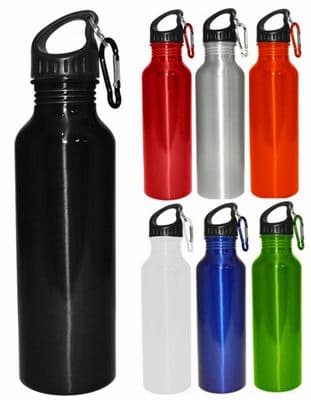
26 October, 2023
The Science Behind Different Drink Bottle Materials
In a world increasingly conscious of both health and the environment, the material of our everyday objects, especially drink bottles, has come under scrutiny. When selecting a drink bottle, one often wonders about its impact on the environment, its durability, and whether it influences the taste of the beverage. Let’s explore the science behind popular materials: stainless steel, glass, and various plastics.
Stainless Steel: The Durable Metal Powerhouse

Advantages:
- Durability: Stainless steel stands as a testament to strength in the world of materials. A significant advantage of stainless steel drink bottles is their inherent durability. Made from alloys that often include chromium and nickel, stainless steel offers high tensile strength, meaning it can withstand significant stress without succumbing to deformation.
Moreover, for those who are constantly on the go or indulge in outdoor activities, accidental drops and bumps are a common occurrence. With their resistance to dents, these bottles handle these challenges gracefully. Unlike plastic or glass, which can crack, break, or scratch easily, stainless steel remains largely unfazed. This resilience ensures a longer lifespan for the bottle, offering users value for their money and reducing the frequency of replacements.
- Insulation: One of the groundbreaking innovations in drink bottle design is the introduction of double-walled insulation, especially prominent in stainless steel bottles. This design involves two stainless steel walls separated by a vacuum. Why a vacuum? Because it's a poor conductor of heat. When you pour a hot drink into such a bottle, the heat finds it hard to cross the vacuum, thus keeping the beverage hot for longer. Conversely, the external heat struggles to penetrate the vacuum for cold drinks, ensuring the drink remains cold.
Practically, this means your morning coffee can stay warm until lunch, or your cold water remains refreshingly cool during a hot day out. It’s not just a minor temperature maintenance; some high-quality bottles can keep beverages hot or cold for up to 12 to 24 hours!
- Taste: While stainless steel's strength and insulation properties are significant, its non-reactive nature plays a pivotal role in beverage enjoyment. Many materials, especially certain plastics, can interact with the drink inside, changing the flavour. Over time, or when exposed to heat, these materials may release or leach certain compounds that taint the beverage's taste.
Stainless steel, being non-porous and non-reactive, ensures that no external flavours or chemicals interfere with the beverage. Whether you're sipping water, juice, tea, or coffee, what you taste is the drink in its purest form, unaltered by the material of the bottle. This attribute makes them especially favoured by those who are particular about the authentic taste of their beverages.
Disadvantages:
- Weight: Regarding the heft of drink bottles, stainless steel certainly packs more weight than plastic bottles. The density of it, which provides its renowned durability and strength, inherently makes it heavier. For the user, this translates to a perceptible difference in weight, especially when carrying the bottle for prolonged periods or during physical activities like hiking or jogging.
However, seeing this weight as a trade-off for other benefits is essential. The robustness of stainless steel means it's less likely to be replaced frequently due to wear and tear. For those prioritising durability and a bottle's lifespan over weight, stainless steel is an attractive option. Yet, weight might be a consideration for activities where every ounce counts, such as long-distance backpacking.
- Heat Conductivity: Stainless steel, being a metal, is a good conductor of heat. This property, while making it an excellent material for various applications, poses a unique challenge for drink bottles. If you pour a scalding beverage into a single-walled stainless steel bottle, the exterior can become quite hot to the touch. Conversely, the exterior can become cold with a cold beverage and sometimes even cause condensation.
However, the advent of double-walled or insulated styles has alleviated this concern to a large extent. The vacuum between the two walls significantly reduces heat transfer, ensuring the bottle's exterior remains close to ambient temperature regardless of the drink's temperature inside. Still, for those using single-walled styles, it's advisable to exercise caution with extremely hot liquids and consider using a sleeve or cover for comfort and safety.
- Environmental Impact: At a first glance, the production of stainless steel does come with a higher carbon footprint than that of plastics. The energy-intensive process of extracting, refining, and shaping the metal is undeniably resource-heavy. However, the environmental narrative of them doesn't end with their production.
They have a remarkable advantage in their longevity and recyclability. A single stainless steel bottle can last for years, if not decades, reducing the need for frequent replacements. This longevity means fewer resources are spent over time on producing replacements.
Also, when it has reached the end of its life, it's 100% recyclable. Unlike many plastics which degrade in quality with each recycling cycle, stainless steel can be recycled without any loss in quality. This means the metal from an old drink bottle can find new life in various other products, reducing waste. Considering the entire lifecycle, the environmental impact of stainless steel bottles, while starting high, evens out or even becomes favourable compared to other materials with shorter lifespans or limited recyclability.
Glass: The Classic Choice

Advantages:
- Taste Preservation: Glass stands out as the ultimate material for taste preservation. Unlike some materials that can interfere with the beverage's flavour profile, glass remains passive, ensuring that each sip tastes exactly as it was intended to. This non-reactive nature of glass makes it a preferred choice for connoisseurs who appreciate the pure taste of their beverages, whether it's water, fresh juice, or a specialty drink. With glass bottles, there's no metallic aftertaste or plastic-like flavour – just the untainted taste of your chosen beverage.
- Chemical-Free: One of the significant advantages of glass is its inherent property of being free from harmful chemicals. Concerns have often been raised about chemicals such as BPA (Bisphenol A) present in certain plastics that can leach into the beverage, especially when exposed to heat. With glass, these concerns are effectively put to rest. Being chemically inert, glass ensures that the drink remains uncontaminated, offering the consumer health benefits and peace of mind.
Disadvantages:
Fragility: The Achilles' heel of glass bottles is their fragility. Unlike stainless steel or plastic, glass is susceptible to breaking upon impact. A slip from the hand or a knock against a hard surface can shatter a glass bottle. This makes them less ideal for rough handling, vigorous activities, or travel scenarios. Many manufacturers offer protective sleeves or cases for their glass bottles to combat this, which can absorb some of the impact and reduce the risk of breakage.
Weight: They tend to be heavier than their counterparts made of plastic or even stainless steel. The intrinsic weight of glass, while lending it a premium feel, can be a point of consideration for those who prioritise lightweight portability, especially during commutes or physical activities. That said, many appreciate the heft of a glass bottle as a reminder of its purity and quality.
Environmental Impact: From an environmental standpoint, glass presents an interesting narrative. While glass production requires energy, often derived from non-renewable resources, its life cycle brings forth its green credentials. Glass is 100% recyclable. It can be melted down and reshaped repeatedly without any degradation in quality. This contrasts with many plastics, which degrade with each recycling cycle. Furthermore, when consumers choose to reuse their glass bottles, it reduces the need for new production altogether. This, coupled with the fact that glass doesn't leach chemicals, positions it as an environmentally friendly and sustainable choice for drink storage.
Plastics: Convenient but Controversial

Advantages:
- Lightweight: Plastic's primary advantage in the world of drink bottles is its lightweight nature. They are typically the most weight-friendly options on the market, translating to unparalleled portability. For those requiring a bottle on the move – whether jogging, commuting or simply moving around an office or home – their minimal weight ensures it never feels cumbersome. This convenience is one reason plastic bottles are popular choices for everyday hydration.
- Durability: High-quality plastics ensure that these bottles can withstand daily wear and tear with ease. Unlike glass, which is susceptible to shattering upon impact, plastic bottles are known to be resilient. They can bounce back from falls, making them especially useful for environments where a bottle might be subject to rough handling, such as gyms, schoolyards, or outdoor adventures. This quality ensures a longer lifespan compared to more fragile counterparts.
Disadvantages:
- Chemical Leaching: One of the most significant concerns associated with certain plastics is the potential for chemical leaching. Chemicals like Bisphenol A (BPA) have been found in specific plastic types and can migrate into the beverage, especially when the bottle is exposed to heat. This leaching raises health concerns and has led many manufacturers to produce BPA-free bottles. While BPA-free options offer a safer alternative, it's crucial for consumers to be informed and cautious about the type of plastic they choose.
NOTE: ALL bottles sold on our website are BPA free.
- Taste Alteration: While plastic does a decent job of storing beverages, it isn't entirely inert. In certain conditions, particularly when left in direct sunlight or a hot car, it can impart an altered taste to its contents. This change in flavour profile, often described as a "plastic" taste, can be off-putting for many. It underscores the importance of storing them in cool, shaded environments to ensure the drink's taste remains unchanged.
- Environmental Impact: On the environmental front, plastic presents a complex picture. On one hand, the production of plastic bottles typically has a lower carbon footprint compared to steel or glass, making its initial environmental impact relatively low. However, the end-of-life scenario for many is less rosy. Many types are non-biodegradable, persisting in the environment for centuries and contributing to pollution in landfills and oceans.
Yet, there's a silver lining. The rise of bioplastics, derived from renewable sources and more biodegradable than conventional plastics, offers a more sustainable alternative. Additionally, the push for better recycling practices and the creation of bottles made from recycled plastic materials show that the industry is adapting in response to environmental concerns.
Conclusion
Choosing the right material for your drink bottle boils down to your priorities. If you're looking for something durable that preserves the taste, stainless steel might be your choice. If chemical-free purity and taste preservation are your top concerns, glass is unmatched. However, if you prioritize weight and convenience, plastic could be the way to go, keeping in mind its potential environmental impact.
Whatever your choice, being informed about the science behind these materials ensures that you're making a decision that aligns with both your personal needs and environmental responsibilities.
The Drink Bottles Team
